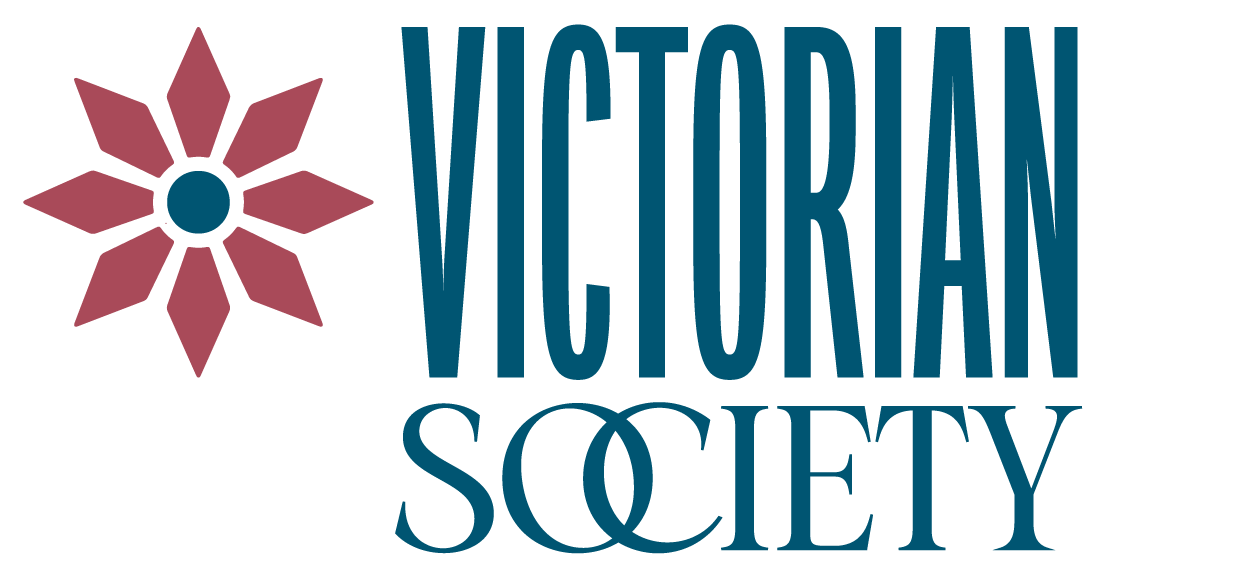Book Awards
The Victorian Society presents up to three book awards annually to books that best advance an understanding or appreciation of the decorative arts or architecture of the 19th Century. Apart from the prestige of the Society’s respected award, winners receive an illuminated manuscript presented at a dinner during the Society’s Annual Meeting.
The Awards Program
The flagship program that the Society initiated many years ago grants annual awards for projects of outstanding merit in the preservation, restoration, or rehabilitation of significant structures created during the period 1837 to 1917, inclusive. Preservation organizations are also eligible for awards. In addition to the prestige of the Society’s award, winners receive an illuminated certificate presented at a dinner during the Society’s annual meeting. The Society also publicizes its awards through this web site. Click on links below for nomination form and further information:
Requirements & Nomination Form
Requirements & Nomination Form
Requirements & Nomination Form
Letters of Support
The Victorian Society in America has established the annual Preservation Awards Program to honor projects of outstanding merit in the preservation, restoration, or rehabilitation of buildings or significant structures that contribute to the heritage of the Victorian era.
In addition to the prestige of the Society’s respected award, winners receive an illuminated certificate presented at a dinner during the Society’s annual meeting. The Society also publicizes its awards through this web site.
The Board’s Preservation Committee, responsible for administering the program, has promulgated the following requirements:
Request a Letter of Support Form
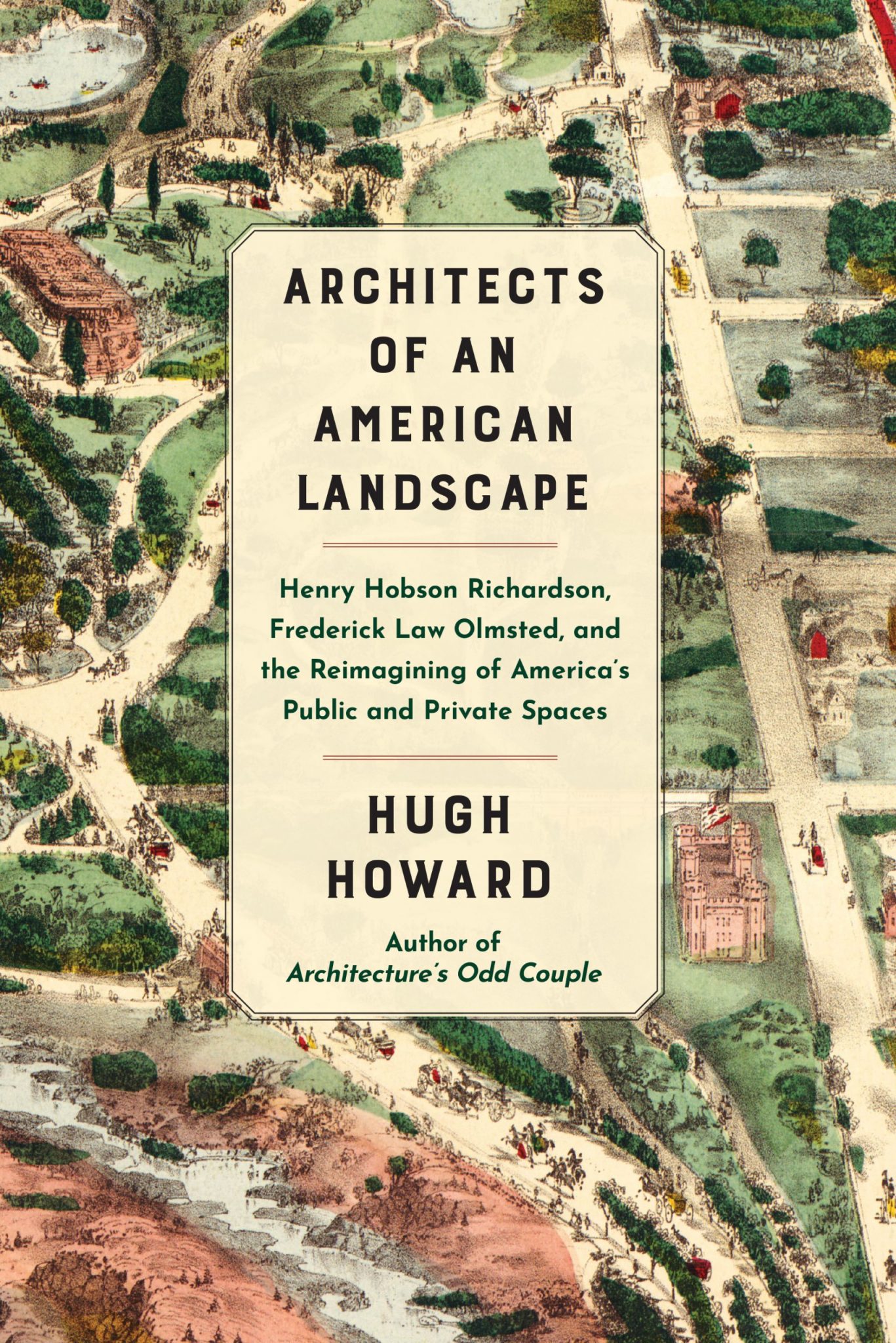
2022 BOOK AWARD
Architects of an American Landscape: Henry Hobson Richardson, Frederick Law Olmsted, and the Reimagining of America’s Public and Private Spaces
by Hugh Howard
“This is a well-researched and thorough book, presented in a readable style. Howard gives both Richardson and Olmsted their due, while taking the reader on a tour of the national landmarks that each created. Many times, the men worked together on projects: Richardson designing homes and buildings, while Olmsted did his magic integrating them to the site. Both had strong but engaging personalities and confidence in their respective work; each recognized the talent in the other and truly worked as a partnership. Each man established his work as a field to be continued after his death. Richardson became the father of distinctly American architecture, and shepherded young talent through his business in a fatherly manner, influencing fledgling architects for decades to come. Olmsted established landscape architecture as a professional field and did likewise with his protégés. While Olmsted has had the advantage of time – his landscapes have endured, grown, and thrived – the Richardson era peaked and ebbed, replaced by others who were influenced in his style and then developed individual approaches to the field, including Frank Lloyd Wright. The book can be useful as a travel guide for people interested in the work of either or both men (hard to separate them) since many of their projects still exist today and are worthy of personal inspection.” – excerpt from public reviewer
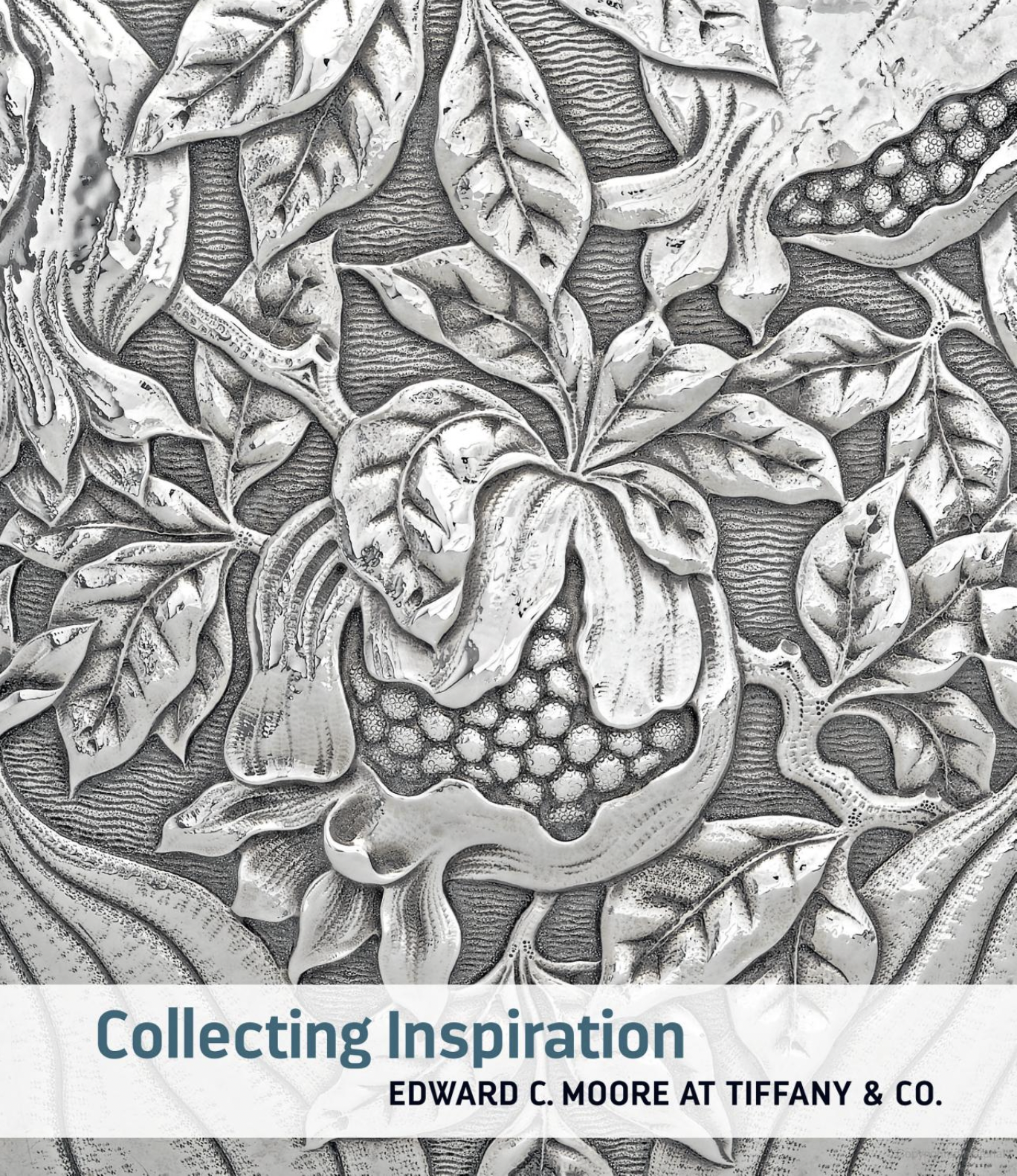
2022 BOOK AWARD
Collecting Inspiration: Edward C. Moore at Tiffany & Co.
by Medill Higgins Harvey
This informative, richly illustrated volume, the first study of Moore’s life, collection, and influence, presents more than 170 examples from his vast collection, ranging from Greek and Roman glass to Spanish vases, Islamic metalwork, and Japanese textiles. These are juxtaposed with sixty magnificent silver objects created by the designers and artisans at Tiffany who were inspired by Moore’s acquisitions. Included among them are the world-famous Bryant Vase drawing upon Greek examples, a love cup featuring ornate “Saracenic” decoration, and a chocolate pot incorporating novel techniques influenced by Japanese ceramics and lacquerware. The illuminating texts have been enriched by groundbreaking research into contemporary sources such as newspapers and periodicals, the Tiffany & Co. Archives, and a newly identified technical manual and supervisor’s diaries, all of which provide an intimate look at the firm’s design processes and Moore’s role in shaping them.
“Collecting Inspiration: Edward C. Moore at Tiffany & Co. introduces the man behind the scenes of many Tiffany designs. Edward C. Moore was a silversmith and prodigious collector. Many of his personal items –Greek, Roman, Spanish, Islamic and Japanese– were used for Tiffany designs. He often brought his own collected objects to the studios for inspiration. The book illustrates specific objects inspired by his personal connection. A recently discovered technical manual add further insight into Moore’s influence in shaping Tiffany designs.” – Anne Taylor Cahill, Board Member and Nominator
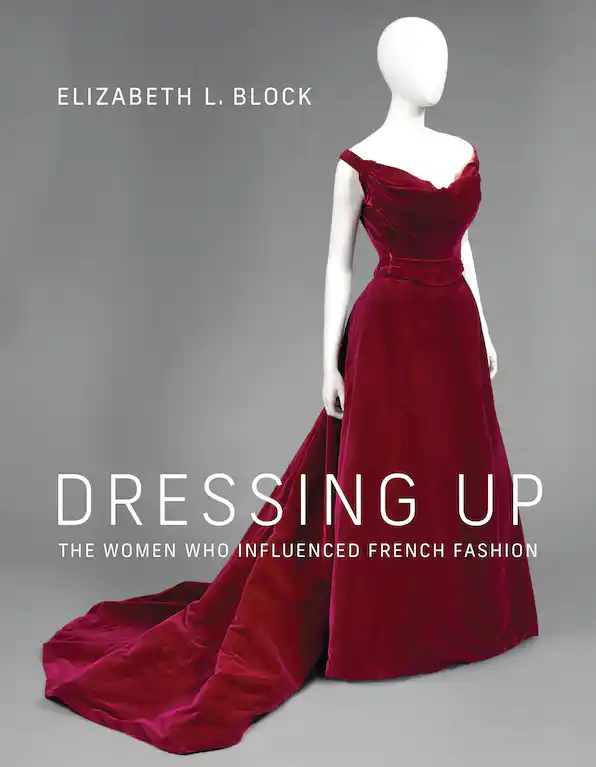
2022 BOOK AWARD
Dressing Up: The Women Who Influenced French Fashion
by Elizabeth L. Block
“The gorgeously illustrated and intriguing book, Dressing Up: The Women Who Influenced French Fashion by Elizabeth L. Block, Senior Editor in the Publications and Editorial Department at the Metropolitan Museum of Art, offers a fascinating study of the enormous influence that the affluent American women patrons played in the major French couturier houses at the turn of the 20th Century. Lavishly dressed in the “au courant” fashions of Worth, Doucet, Felix and other French couture establishments, many of the wealthy Gilded Age ladies commissioned leading artists such as John Singer Sargent, John Everett Millais, and Charles Carolus-Duran to paint their portraits which are richly depicted in this work. In addition, this thoroughly researched volume includes beautiful color photos of museum fashion collections as well as archival photos of society matrons costumed in the finest French apparel. Not only lushly illustrated, Dressing Up, is a fine reference for those interested in a detailed investigation of turn of the century French Fashion.” – Carolyn Sale, Board Member and Nominator
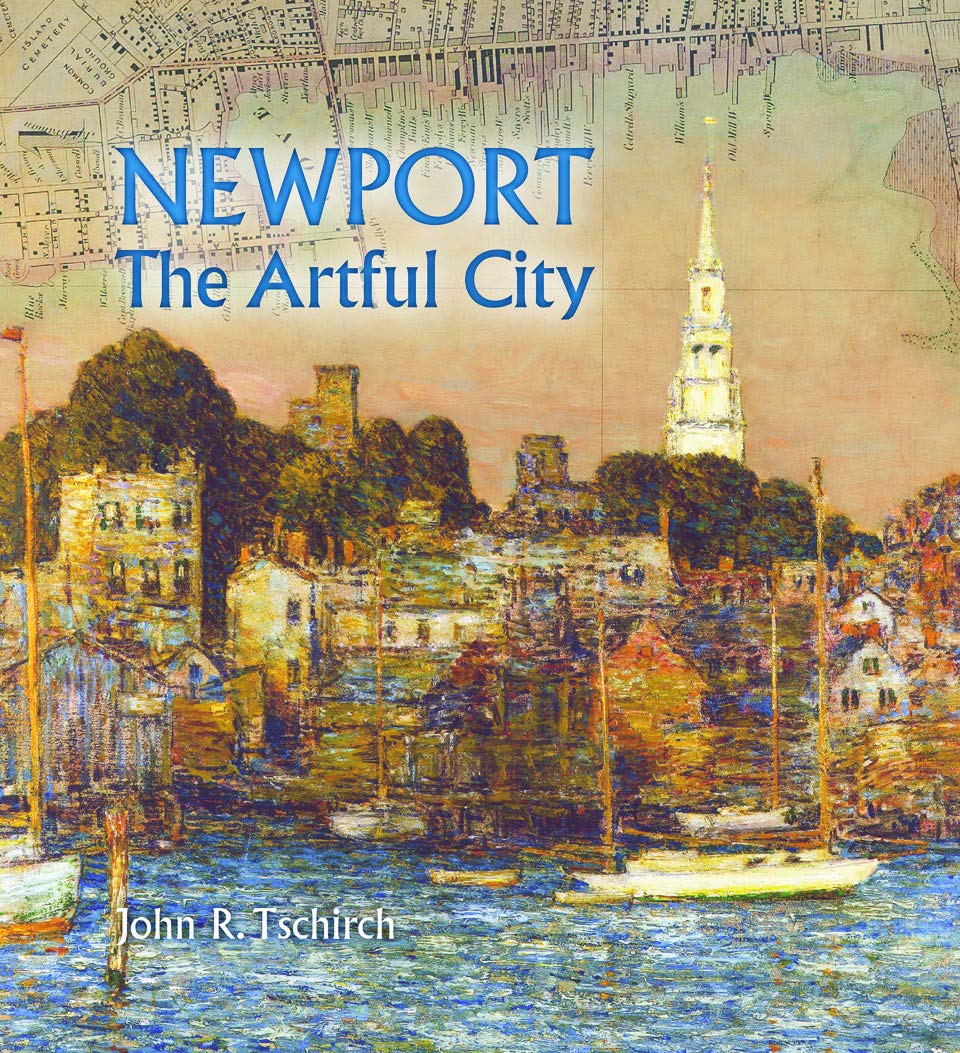
2021 BOOK AWARD
Newport: The Artful City
by John Tschirch
As one of the most historically intact cities in North America, Newport, Rhode Island, has a cultural and architectural heritage of national significance. Each of the city’s districts has its own distinct character with street plans and buildings revealing the political, religious, commercial and artistic forces that have shaped Newport through the ages. Stately Colonial squares and bustling wharves, picturesque Victorian villas and scenic drives, opulent Gilded Age palaces for the few and electric streetcars for the many, and preservation movements to honour the past, and modernist schemes for a metropolis of the future all tell stories of urban beauty and controversy, of eras of lavish building, urban decay and extraordinary revival. A thoroughly accessible, original and valuable source of reference, The Artful City will appeal to the serious scholar as well to all those looking for a highly readable illustrated history of one of America’s most important physical and cultural entities. Maps, paintings, poetry, prose and photographs document and celebrate the development and evolution of this truly artful city.
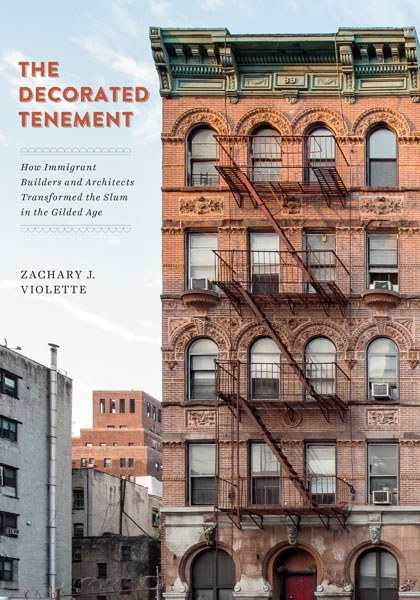
2021 BOOK AWARD
The Decorated Tenement
by Zachary Violette
As the multifamily building type that often symbolized urban squalor, tenements are familiar but poorly understood, frequently recognized only in terms of the housing reform movement embraced by the American-born elite in the late nineteenth century. This book reexamines urban America’s tenement buildings of this period, centering on the immigrant neighborhoods of New York and Boston.
Zachary J. Violette focuses on what he calls the “decorated tenement,” a wave of new buildings constructed by immigrant builders and architects who remade the slum landscapes of the Lower East Side of Manhattan and the North and West Ends of Boston in the late nineteenth century. These buildings’ highly ornamental facades became the target of predominantly upper-class and Anglo-Saxon housing reformers, who viewed the facades as garish wrappings that often hid what they assumed were exploitative and brutal living conditions. Drawing on research and fieldwork of more than three thousand extant tenement buildings, Violette uses ornament as an entry point to reconsider the role of tenement architects and builders (many of whom had deep roots in immigrant communities) in improving housing for the working poor.
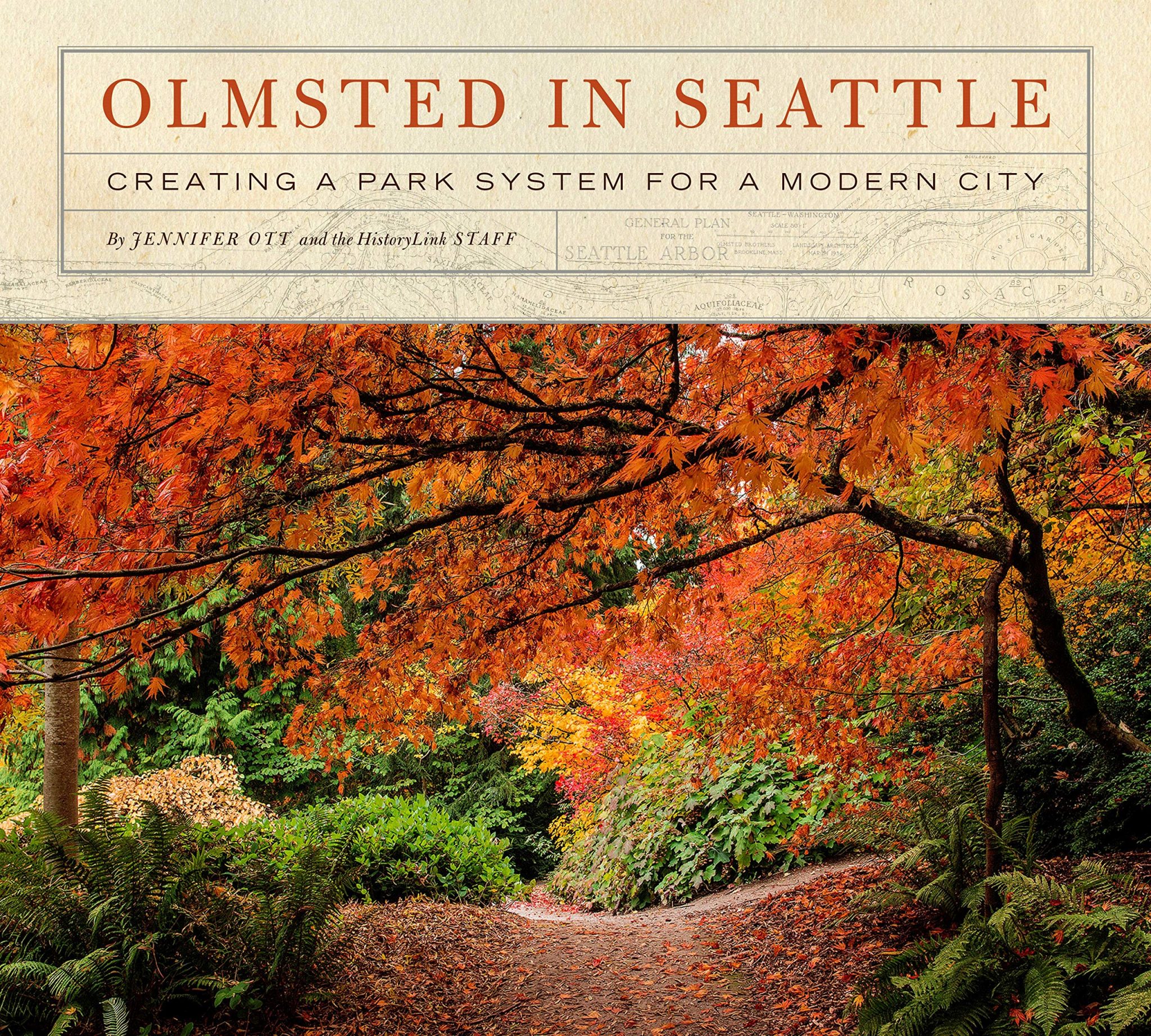
2021 BOOK AWARD
Olmsted in Seattle: Creating a Park System for a Modern City
by Jennifer Ott
In the midst of galloping growth at the turn of the twentieth century, Seattle’s city leaders seized on the confluence of a roaring economy with the City Beautiful movement to hire the Olmsted Brothers landscape architecture firm to design a park and parkway system. Their 1903 plan led to a supplemental plan, a playground plan, numerous park and boulevard designs, changes to park system management, and a ripple effect, as the Olmsted Brothers were hired to design public and private landscapes throughout the region. The park system shaped Seattle’s character and continues to play a key role in the city’s livability today.
In their review of Olmsted in Seattle, The Pacific Northwest Quarterly stated, “Every city with an Olmsted legacy should produce an equally researched and detailed history of the projects and ther developments. This book is a resource as much for the new resident of the city who wants to better understand how Seattle came to be the city it is as for the longtime Olmsted fan or the student of landscape architecture who wishes to design better cities in the future.”
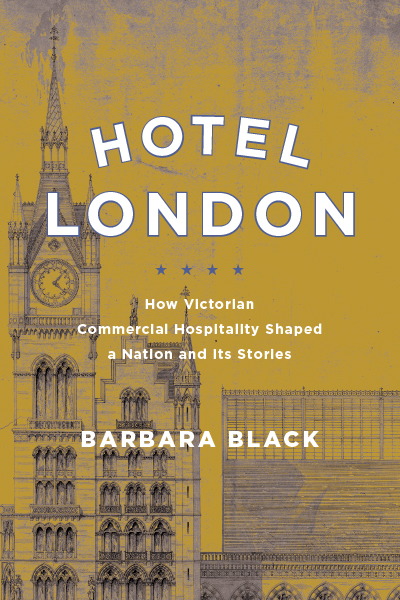
2020 BOOK AWARD
Hotel London: How Victorian Commercial Hospitality Shaped a Nation and its Stories
by Barbara Black
Hotel London: How Victorian Commercial Hospitality Shaped a Nation and Its Stories examines Victorian London’s grand hotels as both an institution and a culture intimately connected to the urban landscape. In her new study, Barbara Black argues that London’s grand hotels provided an essential space for socializing, fashioned by concerns relating to class, gender, and nationality. Rooted in Walter Benjamin’s “new velocities” of the nineteenth century and Wayne Koestenbaum’s hotel theory, Hotel London explores how the emergence of the grand hotel as a physical and metaphorical space helped to construct a consumer economy that underscored London’s internationalism and, by extension, England’s global status.
Incorporating the works of Oscar Wilde, Henry James, Wilkie Collins, Arnold Bennett, Florence Marryat, and Marie Belloc Lowndes, as well as contemporary depictions of the hotels in Mad Men, American Horror Story, and The Grand Budapest Hotel, Black examines how the hotel supported a corporate identity that would ultimately assist in the rise of modern capitalist structures and the middle class. In this way, Hotel London exposes the aggravations of class stratifications through the operations of status inside hotel life, giving a unique perspective on Victorian London that could only come from the stories of a hotel.

2020 BOOK AWARD
The Grandest Madison Square Garden: Art, Scandal, and Architecture in Gilded Age New York
by Suzanne Hinman
November 1891, the heart of Gilded Age Manhattan. Thousands filled the streets surrounding Madison Square, fingers pointing, mouths agape. After countless struggles, Stanford White-the country’s most celebrated architect was about to dedicate America’s tallest tower, the final cap set atop his Madison Square Garden, the country’s grandest new palace of pleasure. Amid a flood of electric light and fireworks, the gilded figure topping the tower was suddenly revealed-an eighteen-foot nude sculpture of Diana, the Roman Virgin Goddess of the Hunt, created by Augustus Saint-Gaudens, the country’s finest sculptor and White’s dearest pal.
The Grandest Madison Square Garden tells the remarkable story behind the construction of the second, 1890, Madison Square Garden and the controversial sculpture that crowned it. Set amid the magnificent achievements of nineteenth-century American art and architecture, the book delves into the fascinating private lives of the era’s most prominent architect and sculptor and the nature of their intimate relationship. Hinman shows how both men pushed the boundaries of America’s parochial aesthetic, ushering in an era of art that embraced European styles with American vitality. Situating the Garden’s seminal place in the history of New York City, as well as the entire country, The Grandest Madison Square Garden brings to life a tale of architecture, art, and spectacle amid the elegant yet scandal-ridden culture of Gotham’s decadent era.
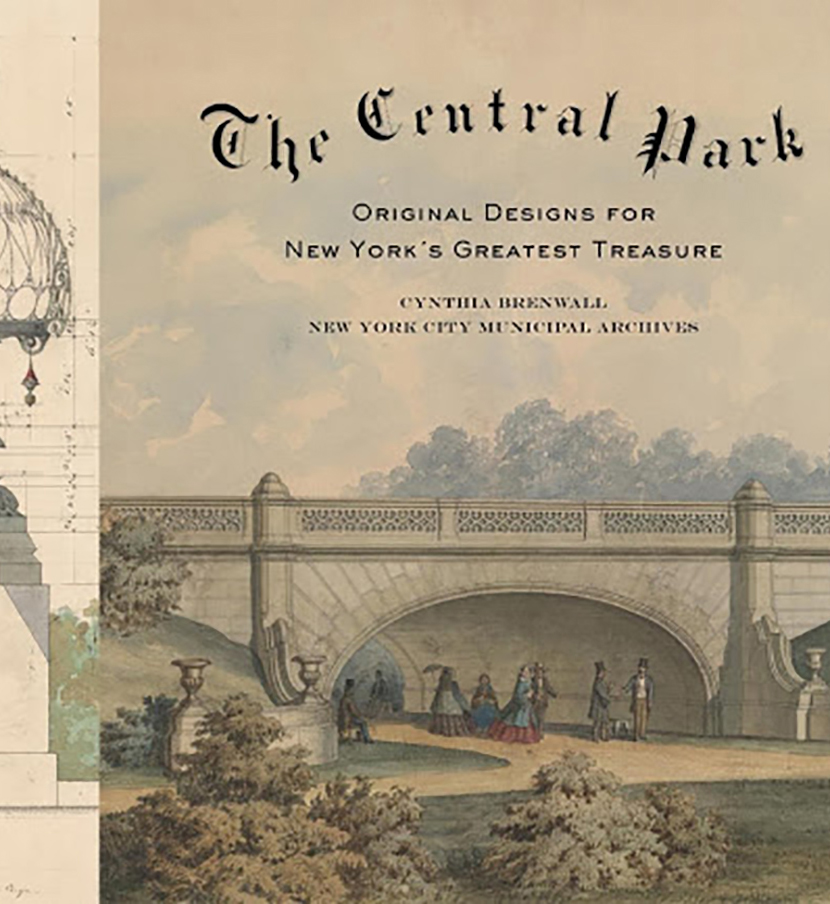
2020 BOOK AWARD
Central Park: Original Designs for New York’s Greatest Treasure
by Cynthia Brenwall
Drawing on the unparalleled collection of original designs for Central Park in the New York City Municipal Archives, Cynthia S. Brenwall tells the story of the creation of New York’s great public park, from its conception to its completion. This treasure trove of material ranges from the original winning competition entry; to meticulously detailed maps; to plans and elevations of buildings, some built, some unbuilt; to elegant designs for all kinds of fixtures needed in a world of gaslight and horses; to intricate engineering drawings of infrastructure elements. Much of it has never been published before. A virtual time machine that takes the reader on a journey through the park as it was originally envisioned, The Central Park is both a magnificent art book and a message from the past about what brilliant urban planning can do for a great city.
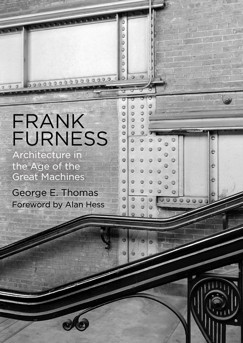
2019 BOOK AWARD
Frank Furness: Architecture in the Age of the Great Machines
by George E. Thomas
Frank Furness (1839-1912) has remained a curiosity to architectural historians and critics, somewhere between an icon and an enigma, whose importance and impact have yet to be properly evaluated or appreciated. To some, his work pushed pattern and proportion to extremes, undermining or forcing together the historic styles he referenced in such eclectic buildings as the Pennsylvania Academy of the Fine Arts and the University of Pennsylvania Library. To others, he was merely a regional mannerist creating an eccentric personal style that had little resonance and modest influence on the future of architecture. By placing Furness in the industrial culture that supported his work, George Thomas finds a cutting-edge revolutionary who launched the beginnings of modern design, played a key part in its evolution, and whose strategies continue to affect the built world.
In his sweeping reassessment of Furness as an architect of the machine age, Thomas grounds him in Philadelphia, a city led by engineers, industrialists, and businessmen who commissioned the buildings that extended modern design to Chicago, Glasgow, and Berlin. Thomas examines the multiple facets of Victorian Philadelphia’s modernity, looking to its eager embrace of innovations in engineering, transportation, technology, and building, and argues that Furness, working for a particular cohort of clients, played a central role in shaping this context. His analyses of the innovative planning, formal, and structural qualities of Furness’s major buildings identifies their designs as initiators of a narrative that leads to such more obviously modern figures as Louis Sullivan, William Price, Frank Lloyd Wright and eventually, the architects of the Bauhaus.
Misunderstood and reviled in the traditional architectural centers of New York and Boston, Furness’s projects, commissioned by the progressive industrialists of the new machine age, intentionally broke with the historical styles of the past to work in a modern way—from utilizing principles based on logistical planning to incorporating the new materials of the industrial age. Lavishly illustrated, the book includes more than eighty black-and-white and thirty color photographs that highlight the richness of his work and the originality of his design spanning more than forty years.
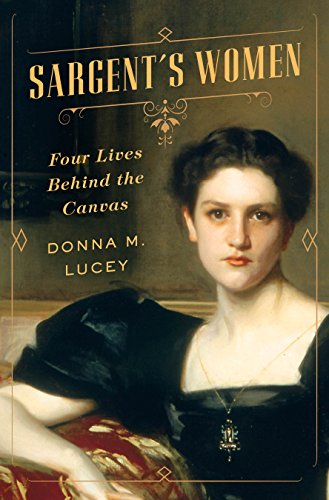
2019 BOOK AWARD
Sargent’s Women: Four Lives Behind the Canvas
by Donna Lucey
In this seductive, multilayered biography, based on original letters and diaries, Donna M. Lucey illuminates four extraordinary women painted by the iconic high-society portraitist John Singer Sargent. With uncanny intuition, Sargent hinted at the mysteries and passions that unfolded in his subjects’ lives.
Elsie Palmer traveled between her father’s Rocky Mountain castle and the medieval English manor house where her mother took refuge, surrounded by artists, writers, and actors. Elsie hid labyrinthine passions, including her love for a man who would betray her. As the veiled Sally Fairchild—beautiful and commanding—emerged on Sargent’s canvas, the power of his artistry lured her sister, Lucia, into a Bohemian life. The saintly Elizabeth Chanler embarked on a surreptitious love affair with her best friend’s husband. And the iron-willed Isabella Stewart Gardner scandalized Boston society and became Sargent’s greatest patron and friend.
Like characters in an Edith Wharton novel, these women challenged society’s restrictions, risking public shame and ostracism. All had forbidden love affairs; Lucia bravely supported her family despite illness, while Elsie explored Spiritualism, defying her overbearing father. Finally, the headstrong Isabella outmaneuvered the richest plutocrats on the planet to create her own magnificent art museum.
These compelling stories of female courage connect our past with our present—and remind us that while women live differently now, they still face obstacles to attaining full equality.
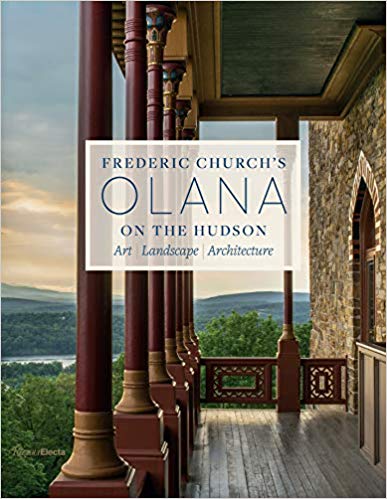
2019 BOOK AWARD
Frederic Church’s Olana on the Hudson: Art, Landscape, Architecture
Edited by Karen Zukowski and Julia B. Rosenbaum
Frederic Church, the leader of the much-loved group of artists known as the Hudson River School, made his name as a painter of monumental landscapes in the mid-1800s, helping to develop our vision of landscape and shaping the cultural identity of America. He applied his artistic talent to the house and property that he named Olana, known today as Olana State Historic Site and located in the heart of the beautiful Hudson River Valley.
The 250-acre naturalistic landscape surrounding the house is a work of art in itself, and the magnificent views beyond Olana were an essential part of Church’s composition, which he carefully designed with an artist’s eye to the property’s 360-degree views of neighboring hills, valleys, the Hudson River, and distant mountains. Church was an observer of the cosmos, and Olana, set in the center of the Hudson River Valley, was his laboratory of observation of all of nature. Spectacular photography by Larry Lederman of Olana, its landscape and house, inside and out, illustrates one of Church’s greatest works of art. The images, many taken especially for this book, have been shot in all seasons and all weather, and include panoramic and aerial views, sunsets, detail shots of both the house and landscape, as well as interior views of the house. Essays will delve into Church and his inspirations and motivations, illuminating not only the estate he built but also his work as an artist.

2018 BOOK AWARD
First in the Homes of his Countrymen: George Washington’s Mount Vernon in the American Imagination
by Lydia Brandt
Over the past two hundred years, Americans have reproduced George Washington’s Mount Vernon plantation house more often, and in a greater variety of media, than any of their country’s other historic buildings. In this highly original new book, Lydia Mattice Brandt chronicles America’s obsession with the first president’s iconic home through advertising, prints, paintings, popular literature, and the full-scale replication of its architecture.
Even before Washington’s death in 1799, his house was an important symbol for the new nation. His countrymen used it to idealize the past as well as to evoke contemporary–and even divisive–political and social ideals. In the wake of the mid-nineteenth century’s revival craze, Mount Vernon became an obvious choice for architects and patrons looking to reference the past through buildings in residential neighborhoods, at world’s fairs, and along the commercial strip. The singularity of the building’s trademark piazza and its connection to Washington made it immediately recognizable and easy to replicate.
As a myriad of Americans imitated the building’s architecture, the Mount Vernon Ladies’ Association carefully interpreted and preserved its fabric. Purchasing the house in 1859 amid intense scrutiny, the organization safeguarded Washington’s home and ensured its accessibility as the nation’s leading historic house museum. Tension between popular images of Mount Vernon and the organization’s “official” narrative for the house over the past 150 years demonstrates the close and ever-shifting relationship between historic preservation and popular architecture.In existence for roughly as long as the United States itself, Mount Vernon’s image has remained strikingly relevant to many competing conceptions of our country’s historical and architectural identity.
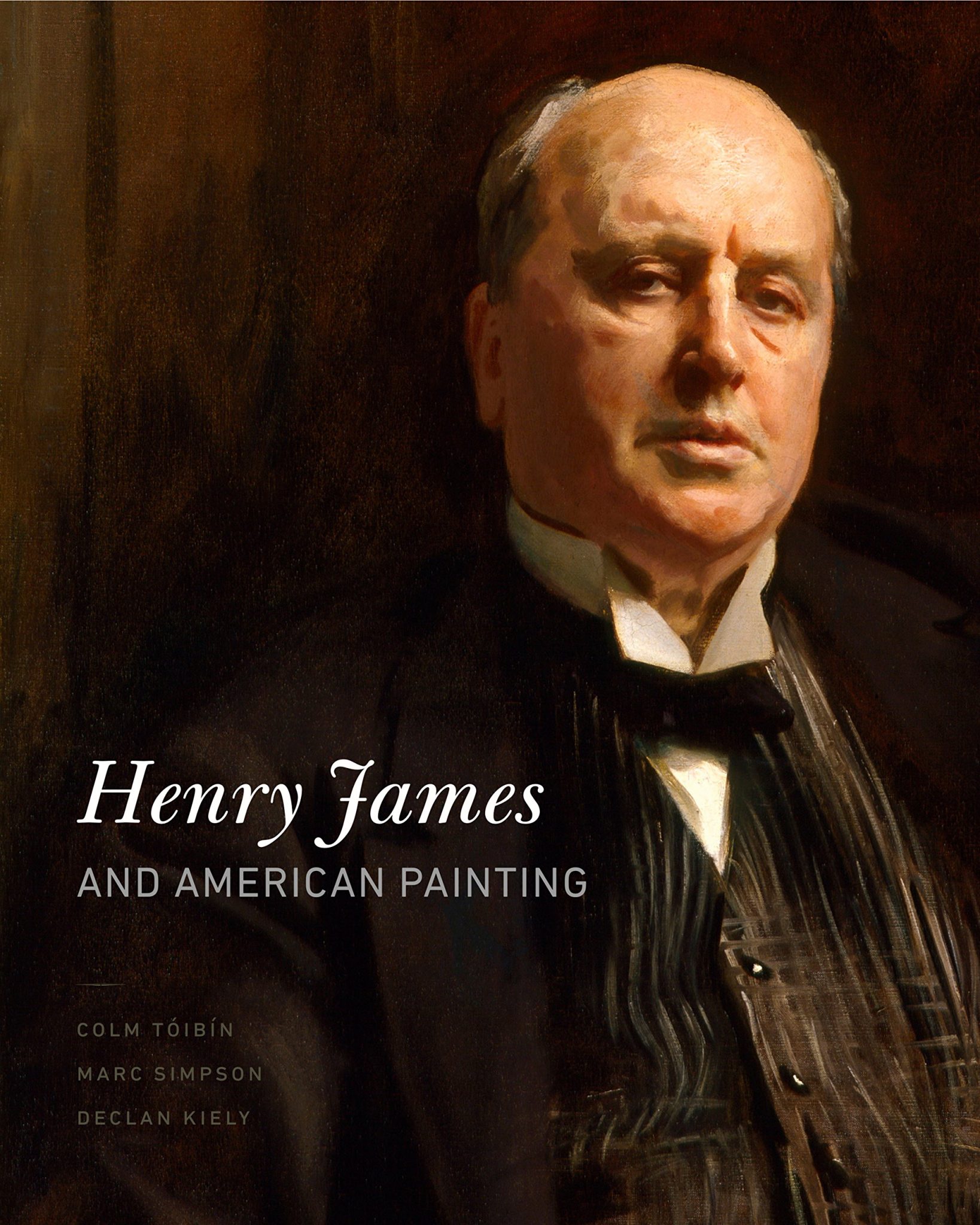
2018 BOOK AWARD
Henry James and American Painting
by Colm Toibin, Marc Simpson, and Declan Kiely
Depicting characters like the eponymous young sculptor in Roderick Hudson and spaces like the crowded galleries in The Wings of the Dove, Henry James’s iconic novels reflect the significance of the visual culture of his society. In this book, novelist and critic Colm Tóibín joins art historian Marc Simpson and Declan Kiely of The Morgan Library & Museum to reveal how essential the language and imagery of the arts—and friendships with artists—were to James’s writing.
The authors consider the paintings, photographs, drawings, and sculpture produced by artists in James’s circle, assess how his pictorial aesthetic developed, and discuss why he destroyed so many personal documents and what became of those that survived. In examining works by figures such as John La Farge, Hendrik Andersen, and John Singer Sargent alongside selections from James’s novels, personal letters, and travel writings, Tóibín, Simpson, and Kiely explore the novelist’s artistic and social milieu. They show him to be a writer with a painterly eye for colors and textures, shapes and tastes, and for the blending of physical and psychological impressions. In many cases, the characters populating James’s fiction are ciphers for his artist friends, whose demeanors and experiences inspired James to immortalize them on the page. He also wrote critically about art, most notably about the work of his friend Sargent.
A refreshing new perspective on a master novelist who was greatly nourished by his friendships with artists, Henry James and American Painting reveals a James whose literary imagination, in Tóibín’s words, “seemed most at ease with the image” and the work of creating fully realized portraits of his characters.
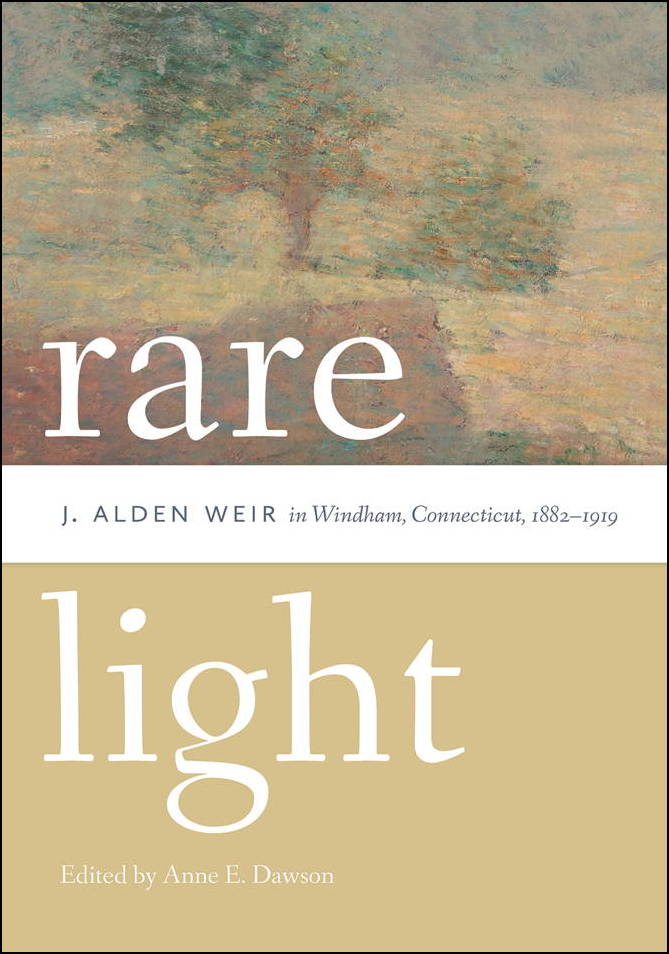
2018 BOOK AWARD
Rare Light: J. Alden Weirin Windham, Connecticut, 1882-1919
Edited by Anne E. Dawson
Rare Light is a collection of essays exploring little known facets of the life and career of a major American Impressionist painter. J. Alden Weir (1852–1919) painted some of his finest canvases while living in Windham in eastern Connecticut’s picturesque “Quiet Corner,” and this rural location played a crucial role in Weir’s artistic development. The four essays that comprise this book offer in-depth contextual information about the architecture, culture, environment, and history of the region, allowing us to see Connecticut as it appeared in Weir’s lifetime. Interweaving photos, paintings, and letters—some never before published—Rare Light documents the artist’s sense of Windham as a place for social gatherings, physical and psychic rest, and art making. Taken together, the essays celebrate the interconnectedness of art, architecture, family, history, and place. Includes essays by Charles Burlingham Jr., Rachel Carley, Anne E. Dawson, and Jamie Eves.
Nominate a Book
Criteria
1. The book must be published in the year preceding the award.
2. Chronology & subject should be in the period 1837-1917.
3. Evaluation of the book will include content and the following:
Overall design
Production quality
Editing
Source material (footnotes, bibliography, etc.)
How to Nominate
Nominations for the Victorian Society in America Book awards are accepted from members of the Society, in written form. Publishers may also submit a nomination but must include a copy of the book to be considered.
Deadline: December 31
The Business Manager at the National Office will be pleased to answer any questions regarding the criteria for the process for nominations for a book award. Contact information is at the bottom of the page.
